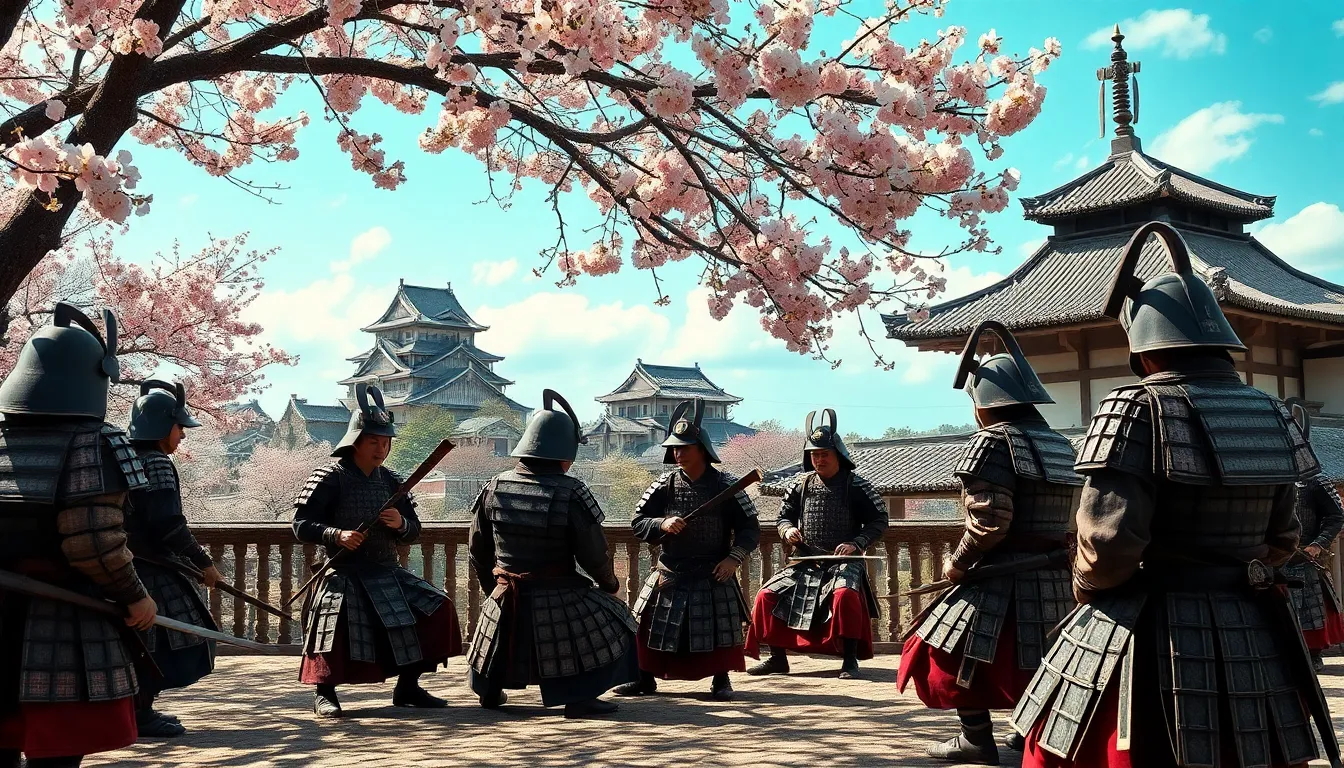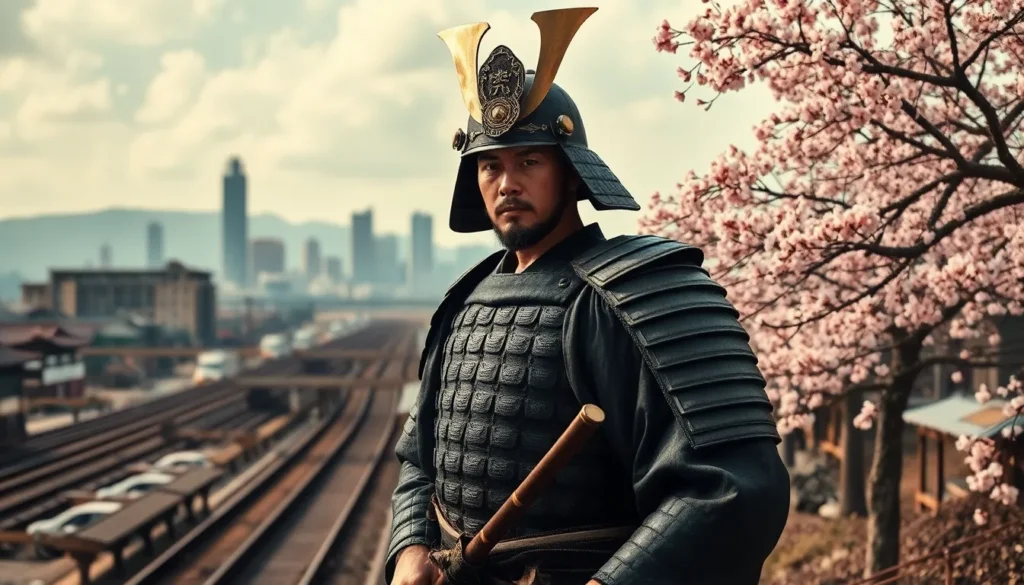In the annals of Japanese history, few events are as transformative as the Meiji Restoration. Picture this: it’s the mid-19th century, and Japan is about to trade its feudal past for a shiny new future. But when did this monumental shift actually take place? Spoiler alert: it all kicked off in 1868, but the ripples of change spread far and wide, shaking up everything from samurai culture to sushi-making techniques.
The Meiji Restoration wasn’t just a change of leadership; it was a full-blown revolution that catapulted Japan into the modern age. So, if you’re curious about how a nation went from shoguns to skyscrapers faster than you can say “sushi roll,” buckle up. This journey through time promises to be as enlightening as it is entertaining.
Table of Contents
ToggleOverview Of The Meiji Restoration
The Meiji Restoration began in 1868, marking a pivotal transformation in Japan’s history. This era replaced centuries of feudal rule under the shogunate with a centralized government led by the Emperor. Significant reforms took place across political, economic, and social dimensions.
Society underwent drastic changes, particularly within the samurai class. Samurai were no longer the ruling elite; many transitioned into new roles within the modern military or civilian sectors. Additionally, the abolition of the samurai stipends altered traditional power structures.
Economically, the Restoration promoted rapid industrialization. Factories emerged, and infrastructure developments included railroads and telegraph lines. Japan transitioned from an agrarian society to an industrial powerhouse. This shift improved productivity and created new job opportunities for the populace.
Education reforms also featured prominently. The government established a new public education system, aiming for universal literacy and technical skills. The emphasis on education helped produce a workforce equipped for modern industry.
Culturally, the Meiji period saw a blend of Western and traditional Japanese influences. Arts, fashion, and culinary practices evolved, reflecting this fusion. Traditional elements remained influential, while modern ideas gained prominence, enhancing Japan’s global presence.
Internationally, Japan sought to modernize its military to avoid colonization. By adopting Western techniques and technologies, Japan strengthened its defense capabilities. These developments positioned Japan as an emerging power in the global arena, culminating in victories in various conflicts, including the First Sino-Japanese War in 1894.
Historical Context

The Meiji Restoration marked a pivotal transformation in Japan’s history, moving from feudal isolation to a modern state. This shift fundamentally altered Japan’s political, social, and economic landscape.
Pre-Restoration Japan
Feudal Japan operated under a complex system dominated by the shogunate. Local lords, known as daimyo, controlled land and provided military service, creating a decentralized power structure. The samurai class held significant social status, yet their influence began to decline in the face of challenges from foreign powers. Economic practices focused primarily on agriculture, limiting industrial development. Trade restrictions and isolationist policies stunted foreign relations, hindering technological and cultural advancements. Cultural practices remained largely traditional, with a strong emphasis on Confucian values that governed social hierarchies.
Key Influences Leading to Change
Several critical factors spurred the Meiji Restoration. External pressures from Western nations demanded Japan open its ports for trade. Commodore Matthew Perry’s arrival in 1853 signified a turning point, forcing Japan to confront its isolationist stance. Internal unrest among samurai and dissatisfaction with the existing shogunate fueled calls for reform. The ideas of Western enlightenment thinkers inspired reformists, advocating for modernization and a centralized government. Additionally, economic stagnation heightened the urgency for industrial change, directly influencing political leaders. These influences combined to create an environment ripe for revolution, setting the stage for significant reforms during the Meiji era.
Timeline Of The Meiji Restoration
The Meiji Restoration is a critical period in Japan’s history, marked by significant transformations from 1868 onwards. This timeline outlines key events and figures that shaped the era.
Major Events And Their Dates
In 1868, the Boshin War ended, leading to the restoration of imperial rule. The Charter Oath was established in April 1868, emphasizing modernization goals. The abolition of the han system occurred in 1871, dismantling feudal domains. Establishment of the modern imperial army happened in 1873, transitioning military organization. In 1889, the Meiji Constitution was enacted, solidifying political changes. A significant highlight includes Japan’s victory in the First Sino-Japanese War in 1894, showcasing military modernization.
Key Figures Involved
Emperor Meiji played a pivotal role, embodying the era’s transformation. He ascended the throne in 1867, guiding Japan towards modernization. Leaders like Toshimichi Okubo advocated for reform, influencing political decisions. Saigo Takamori, a military figure, was instrumental during the Boshin War. Yukichi Fukuzawa, a scholar, promoted Western education and ideas. These figures collectively contributed to redefining Japan’s national identity during the Meiji Restoration.
Impact Of The Meiji Restoration
The Meiji Restoration significantly reformed Japan’s political landscape, transitioning from a feudal system to a centralized government. Political power shifted from the shogunate to the Emperor, restoring imperial rule and establishing a modern bureaucracy. The introduction of the Charter Oath in 1868 outlined principles for governance and encouraged public participation in politics. Political parties emerged, fostering a more democratic environment despite initial restrictions. Key legal reforms introduced a written constitution in 1889, laying the groundwork for eventual parliamentary systems.
Social and economic reforms drastically changed Japan’s fabric during the Meiji era. Education became a cornerstone of societal transformation, promoting universal literacy and technical skills. The workforce received modern training, enabling Japan’s rapid industrialization. Economic policies also encouraged the establishment of industries and infrastructure, leading to the creation of factories, railroads, and telegraph lines. Wealth concentration shifted as the zaibatsu, large conglomerates, emerged, driving economic growth. These reforms propelled Japan toward becoming an industrial powerhouse on the world stage.
Legacy Of The Meiji Restoration
The Meiji Restoration left a lasting legacy that continues to shape Japan’s trajectory.
Modern Japan’s Development
Modern Japan’s development traces its roots to the reforms of the Meiji era. Fundamental political changes established a centralized government, replacing feudal structures. Innovations in industry propelled Japan from agrarian dependence to an industrial leader. The introduction of compulsory education fostered a literate workforce equipped with technical expertise. Economic policies encouraged entrepreneurship, resulting in the emergence of zaibatsu, influential industrial conglomerates. Advanced infrastructure projects, such as railroads and telegraph systems, facilitated rapid urban growth. The modernization of the military created a formidable defense, allowing Japan to assert its influence regionally and globally. Cultural fusion also emerged, blending Western influences with traditional practices, further enriching Japanese society. Today, these developments manifest in Japan’s status as an economic powerhouse and a leader in technology and innovation.
The Meiji Restoration stands as a cornerstone in Japan’s journey toward modernization. By dismantling the feudal system and embracing reforms, Japan transformed itself into a formidable industrial power. This period not only reshaped its political landscape but also laid the foundation for a society that values education and innovation.
The blending of Western influences with traditional practices continues to define Japan’s cultural identity today. As a result of the Meiji Restoration, Japan emerged as a global leader, showcasing the profound impact of this pivotal era on its historical trajectory. The legacy of these changes remains evident in Japan’s ongoing technological advancements and economic prowess.




